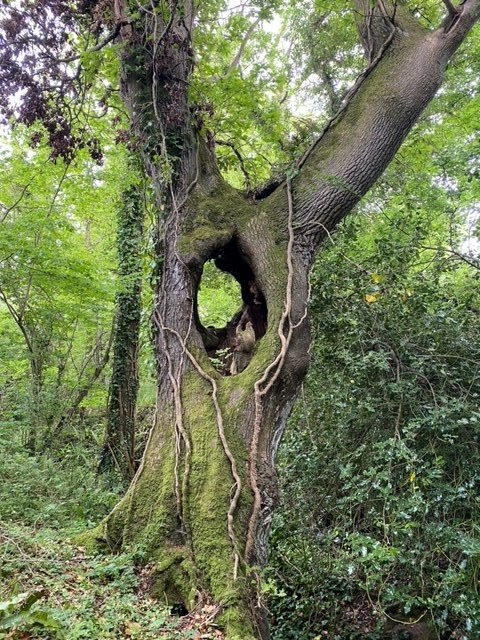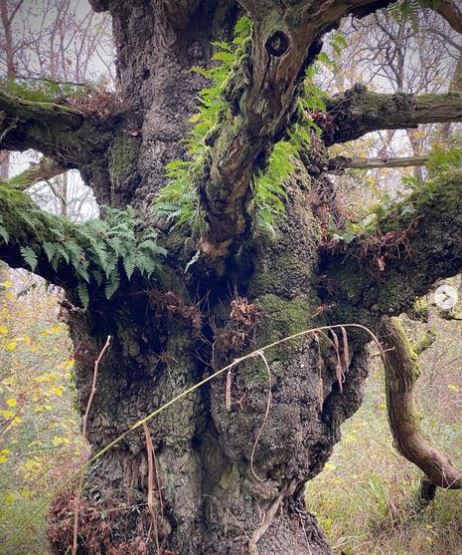Ancient and Veteran Tree Management Advice

We have a keen interest in working with ancient, veteran or notable trees and are one of the few contractors to have been awarded the Practitioners level VETCert qualification. Matthew currently now works for The Arboricultural Association as an examiner for the practising level qualification. In 2023, Matthew also achieved the Consulting Level qualification.
Ancient and veteran trees often come under threat from development, agricultural practices or outdated tree work recommendations based on health and safety concerns. We strive to help protect these valuable trees by identifying and surveying veteran or ancient trees and recommending best practice management in terms of tree work recommendations, surrounding site management and their long-term care.
Through our own projects and by invitation to work with industry leading professionals we have worked at some of the top sites for ancient and veteran trees in the UK, including National Trust properties such as the Killerton Estate in Devon, Dyrham Park in Gloucestershire, and Croft Castle in Herefordshire, Moccas Park in Herefordshire, Sherwood Forest in Nottinghamshire and Richmond Park in London.
Arboricultural Reports for Ancient and Veteran Trees
We can provide Arboricultural Reports for ancient and veteran trees and are able to provide bespoke management recommendations for both individual and collections of ancient and veteran trees. We have undertaken collaborative tree surveying and Arboricultural Report projects with other leading industry professionals for large collections of ancient and veteran trees around the UK. We can provide guidance for the protection of these trees and associated habitats in compliance with recognised good practice established by the Woodland Trust and Ancient Tree Forum and the National Planning Policy Framework and planning guidance (Ancient woodland, ancient trees and veteran trees: advice for making planning decisions).
We look forward to talking with you to see if we can assist you to secure the long-term future of any ancient or veteran trees. Please get in touch for further details.
Why are ancient and veteran trees so important?
Some trees can live for hundreds, if not thousands, of years. They are irreplaceable. We appreciate the value of these fascinating and unique habitats and believe it is essential to try and help protect them. Ancient and veteran trees are a vital and treasured part of our cultural history and landscapes in the UK. There is estimated to be 2,000,000 ancient, veteran and notable trees in the UK alone. Hosting a variety of fungi, lichens, invertebrates, birds and other rare and specialist wildlife in nooks and crannies, these magnificent trees are incredibly invaluable hubs for biodiversity. One ancient Oak can have more biodiversity than a thousand 100-year-old Oaks. However, many ancient and veteran trees throughout the UK are in a serious condition and face threats such as soil compaction of root areas, overshading from neighbouring trees and vegetation and intensive agricultural activity causing problems such as root damage from cultivation, application of inorganic chemicals and grazing damage by livestock.
There is a current drive for tree planting which is important, however, new trees will take years to establish and become suitable habitats for the thousands of wildlife species that rely on trees for food and shelter. It is therefore so important to protect and aid our existing trees as best we can and help to ensure the future survival of all species which depend on them.
Through education and continuous professional development, research and collaborating with industry peers, we strive to give the most up to date advice on the best practice management of these trees and their associated habitats.

What is an Ancient, Veteran or Notable tree?
Ancient Trees
Ancient trees are trees which have lived beyond the mature life stage and are usually in the process of decay. They are the oldest of their species and in their final stages of life, however, this stage can last for many, many years. There is no set age for a tree to be classed as ancient, as different species age at different rates. Identifying characteristics are thinner and smaller canopies due to age related crown retrenchment, very well developed wood decay characteristics, deadwood, large girth trunks and hollowing. They need open growing conditions and can be found in a range of habitats in the UK, from deer parks, old royal hunting forests, parklands, commons, wood pastures and hedgerows or even in urban settings. Ancient trees are classified separately because of their special value due to age and significance in helping to interpret the historic landscape for many centuries. These trees are rich in history and need special care and protection.
Veteran Trees
Veteran trees are trees which have features of ancient trees and are in, or beyond, the mature life stage. A veteran tree is very old compared to others of the same species but again, there is no set age a tree must be to be considered veteran. Their features may include significant or substantial heartrot decay/hollowing in the trunk or major limbs, a significant or substantial volume of branch or stem deadwood, missing branches, fissured bark, trunk or limbs cracks and splits, a fruit body of a significant non-heartwood fungus and habitat features more commonly associated with ancient trees. They are the ancient trees of the future and equally deserving of care and attention to ensure their longevity. They may also be important both culturally and aesthetically.
Notable Trees
Notable trees are usually mature trees which may stand out and be significant in the local environment because they are large or differ in some other way in comparison with other trees around them. They don’t have any obvious veteran characteristics, but may be taller than ancients and wider than some veterans.
Notable trees are usually worthy of recognition and attention as they can be potential, veteran trees of the future.


VETcert Practitioner and Consultant
VETcert is a pan-European certification scheme for veteran tree specialists developed to raise the standard in veteran tree management across Europe. It provides individuals with the opportunity to have their skills and expertise recognised, increasing opportunities for work, both at home and across Europe. It also makes it easier for organisations procuring veteran tree management services to identify and select suitable professionals. Matthew was one of the first contractors in the UK to pass the VETcert Practitioner qualification.
The VETcert certification scheme was developed by an Erasmus+ funded project which ran between 2016 and 2019. The project brought together seven partners from ten European countries, including the UK, Sweden, Belgium, Spain, France, Czech Republic and Germany.
Matthew has specialised in working with ancient and veteran trees for over fifteen years. This qualification has been a great way to demonstrate his knowledge and skills in one of the more specialist fields of Arboriculture. In 2022, Matthew became an examiner for the practising level qualification for The Arboricultural Association. In 2023, Matthew also achieved the Consulting Level qualification.

Ancient and Veteran Tree News
Read some of our recent blog posts relating to our work with ancient and veteran trees in Devon and around the UK.




